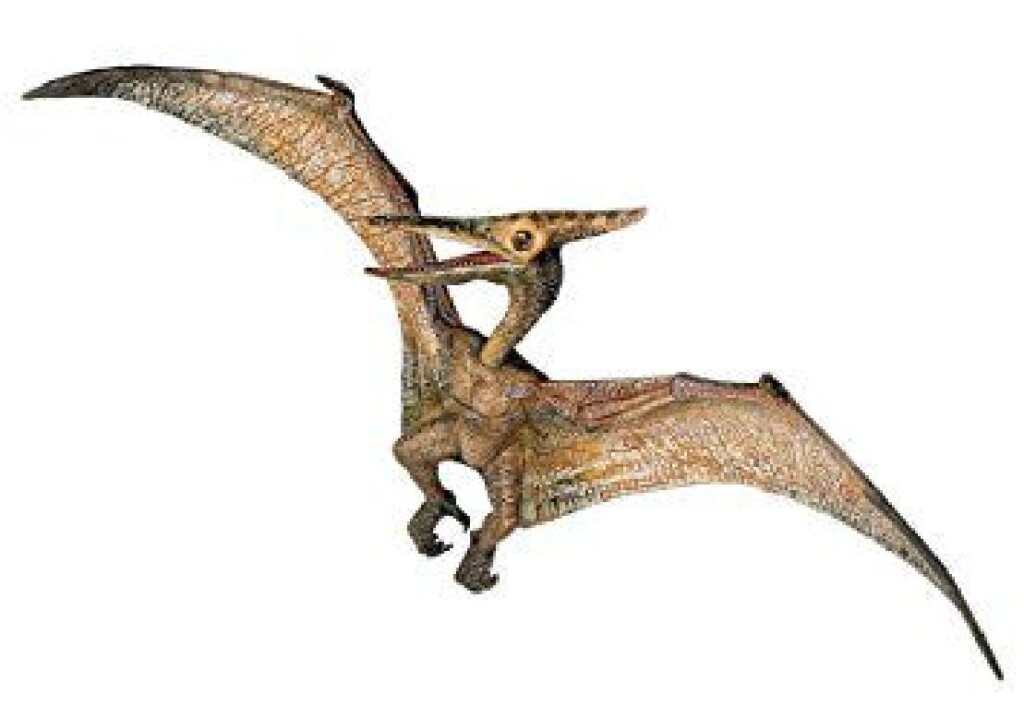
God created a variety of kinds of animals on days five and six of creation week. A pair of each kind of the land-dwelling, air-breathing animals was taken on the Ark. When they came off the Ark, they speciated and proliferated over the entire globe, often facilitated by land bridges caused by a lower sea level during the post-flood Ice Age. Since the Flood, over the centuries, some new species have emerged and old species and perhaps even whole kinds have become extinct. It stands to reason that some of the animals mentioned in the Bible, especially those mentioned in Job, are no longer extant (living today).
In the context of Job, Chapter 39, God is describing some of His amazing wild, untamed, animals. Here he lists among others, the wild donkey (vss. 5-8) and the wild ox (vss. 9-12, probably the now extinct aurochs[1]). Then, in verses 13-18, God describes this other wild flying animal.
13 The wings of the ostrich <05965> wave proudly, But are her wings and pinions like the kindly stork’s? 14 For she leaves her eggs on the ground, and warms them in the dust; 15 She forgets that a foot may crush them, or that a wild beast may break them. 16 She treats her young harshly, as though they were not hers; Her labor is in vain, without concern, 17 Because God deprived her of wisdom, and did not endow her with understanding. 18 When she lifts herself on high, she scorns the horse and its rider. (NKJV).
Translators admit that the meaning of the Hebrew in verse 13, is uncertain. It varies somewhat in the different English translations. The Hebrew alac aw-las <Strong’s 05965> is translated peacock in the KJV but ostrich in other translations. The word seems to refer to the “joyful” flapping of this “bird’s” wings. The question is, “Does the passage in verses 13 through 18 describe an ostrich, a peacock, or some other flying animal?”
All translations of this passage imply this “ostrich” has plumage different from the stork. In fact, there is no plumage or feathers mentioned at all in the NKJV or J.P. Green’s literal translation. They emphasize the “pinions” (bone structure of wings). This “bird’s” wings may have resembled those of bats.
This “bird” has been “deprived of wisdom.” It apparently abandons its eggs on the ground[2] and treats her young harshly. Although the dominant female ostrich in a group lays her eggs in a shallow hole on the ground that has been dug by the male, they do not just leave their eggs there. The female and male take turns sitting on the nest to incubate them. Also, ostriches are considered to have “strong family bonds.” Young ostriches stay with their parents for seven months[3]. Female peacocks (peahens) will incubate their eggs on a ground nest for 28 to 30 days. Also, although ostriches can run fast, they can’t fly. Peacocks can only fly short distances and not very high, far, or fast. This “bird” apparently lifts up “on high” and can fly faster than a horse and rider. This animal is no ostrich or peacock.
There are two other Hebrew words of interest here in the Old Testament. The first, yah-an-ah <03284>, appears eight times. It is sometimes translated owl but more often ostrich (Lev 11:16, Deut 14:15, Job 30:29, Isa 13:21, Isa 34:13, Isa 43:20, Jer 50:39, Mic 1:8). The second, ya-en <03283>, is used just once in Lamentations 4:3. But it is always translated ostrich in the other versions. James Strong identifies the yah-an-ah <03284> as “an unclean bird” or “perhaps an extinct bird, exact meaning unknown.”
It is noteworthy that this animal is often paired – in Job 30:29, Isa 34:13, Isa 43:20, Mic 1:8, and Lam 4:3 – with the tanniyn <08577>, which Strong identifies as a marine or land monster. The KJV often translates the tanniyn as dragon. Creationists believe that the dragons (tanniyn) of the Bible most likely refer to dinosaurs and not jackals as many translations say. Note that the term “dinosaur” was not coined until 1841, well after the KJV was translated. Unfortunately, because of evolution’s hold on most scholars, modern Bible translators have avoided changing tanniyn from dragons to dinosaurs, and opted for the non-controversial jackal.
Scripture also infers that these “ostriches” are wild animals of abandoned areas (Isa 34:13) or the wilderness/desert (Isa 13:21, 43:20 Jer 50:39, Lam 4:3). Job metaphorically laments his abandonment by God to join these wild animals (Job 30:29). Ostriches would not be considered wild and untamable. They were first kept in captivity during the Bronze Age, in a tamed and semi-domesticated state, in the gardens of Babylon, in Nineveh and Egypt, as well as later in Greece and Rome[4].
Josephus reported on Moses encountering flying serpents (most likely pterosaurs) on his (desert) conquest of Ethiopia[5]. Although it does not use the Hebrew words mentioned above, the Bible does refer to fiery flying serpents in Isa 14:29 and Isa 30:6; and it refers twice to fiery serpents which the Israelites encountered in the wilderness (Num 21:6, Deut 8:15).
Although the Hebrew words used to refer to these creatures are different, it is possible that they refer to different species of the pterosaur (flying reptile) kind. Besides the biblical references and that by Josephus to flying serpents, pterosaur-like creatures are found in native American legends (i.e., the Thunderbird[6]) and historical accounts have been noted as late as 1793 in northeast Scotland, UK[7]. This is not surprising to creationists. God’s amazing creatures have co-existed with mankind ever since day six of creation. Let us praise and glorify our Creator, the Lord Jesus Christ, for the amazing variety of plants and animals He has given us to marvel at and often benefit from, even those which are no longer with us.
Jack Snyder
[1] Creation Research Society Quarterly 2023 60:75.
[2] Paleontologists suggest, “the flying reptiles (pterosaurs) were burying their eggs instead of sitting on them like modern birds do.” https://www.earthtouchnews.com/discoveries/fossils/hundreds-of-fossilised-eggs-reveal-the-nesting-habits-of-ancient-flying-reptiles/
[3] https://www.calacademy.org/blogs/earthquake/the-ostrich-whisperer#
[4] https://www.thoughtco.com/who-really-domesticated-ostriches-169368
[5] Josephus, Antiquities of the Jews, Book II, Chapter 10, Paragraphs 1, 2.
[6] https://answersingenesis.org/dinosaurs/dragon-legends/thunderbirds/
[7] Bill Cooper, 1995, After the Flood, New Wine Press, Chichester, West Sussex, England, p. 141.





Leave A Comment